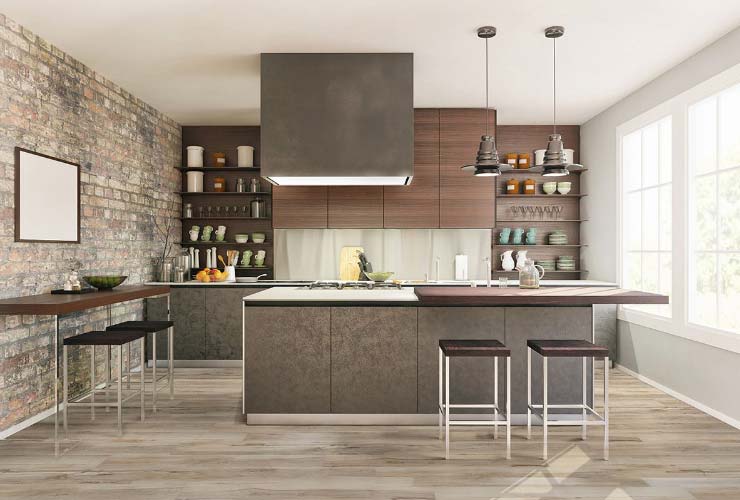Wood flooring is a beautiful addition to any home. With all the different options available to you, you may be wondering what the differences are, and which option is best for you. In this post, we’ll discuss common options and provide you with enough information that will allow you to choose which one is right for your home.
When choosing which wood flooring option is best for you, there are things to consider like price, utility, aesthetic, etc. Below we will outline the pros and cons of each wood flooring type.
Solid Hardwood
Solid hardwood floors are milled from a single piece of hardwood. They are then covered with a thin protective layer consisting of aluminum oxide, acrylic, or ceramic. Because of the thick nature of the solid hardwood planking, it can be sanded and refinished many times throughout the life of the floor.
Solid hardwood will expand and contract depending on the home’s relative humidity. In order to prevent warping, humidity levels should be kept between 45% and 65% at all times. Solid hardwood flooring is permanently nailed to the subfloor. And because of the tendency to expand and contract, installers will leave a gap between the wall and the floor to accommodate.
Solid hardwood flooring comes in a variety of wood species, including oak, maple, black walnut, pecan, mesquite, and more. You can also find more exotic types from places such as Brazil and Africa.
Solid hardwood flooring should only be installed in areas of the home above grade, and only over plywood, wood, or oriented strand board subfloors.
Engineered Wood
Engineered wood flooring is composed of multiple layers (typically 3-5) that are bonded together by extreme heat and pressure, which makes them real hardwood floors, just made differently. Engineered wood consists of a top hardwood layer, which is then backed by less expensive layers of plywood. Sometimes manufacturers use recycled wood fibers mixed with stone dust to improve durability and stability.
Due to the way engineered wood is processed, it’s not affected by humidity. Because of this, engineered wood flooring is the better choice for kitchens, bathrooms, and other areas where humidity levels can vary. They are also better for installing over in-floor heating systems.
Engineered wood planks are created with a tongue and groove method, similar to laminate flooring. This allows them to be installed in a floating floor format, without nails or glue. Engineered wood flooring is suitable for installation on all levels of the home making it a convenient option.
Tile, Laminate, Vinyl Planks
If you like the look of wood flooring, but want to be a little more wallet-friendly, laminate or vinyl planks may be the way to go. While these flooring options are not made from wood, they can be made to mimic the look of real wood flooring. We will break them down for you below.
Ceramic tile is made using a process called dry pressing, or dust pressing. It is essentially clay that starts out as dust and is then formed, glazed, and finally baked. Due to its water-resistant nature, tile flooring is ideal for areas that get wet, making it a great choice for rooms such as the bathroom, kitchen, and laundry rooms.
Laminate doesn’t scratch as easily as real wood flooring, but it is susceptible to water around the seams. In the event the flooring does get wet around the seam area, it cannot be recovered from the water damage, unlike real wood flooring. Manufactures print patterns onto the substrate to give the illusion of real wood flooring. The printed substrate is combined with a clear top and then using pressure and adhesives, the pieces are laminated together.
SPC vinyl flooring is comprised of a mixture of natural limestone, polyvinyl chloride, and stabilizers. In the case of WPC vinyl flooring, the core is comprised of recycled wood pulps and plastic composites. Vinyl flooring is relatively easy to install yourself, just make sure to follow the manufacturer’s instructions.
Conclusion
There are many home flooring options, and there is not necessarily a right or wrong choice. It just depends on your needs, and your preferences. We hope that what we outlined above has helped to inform you of your options, and ultimately helps you decide which choice is best for your home! You can view our catalogue of flooring options here, and as always you can give us a call with any questions. We’d love to assist you in finding your dream home flooring option!







